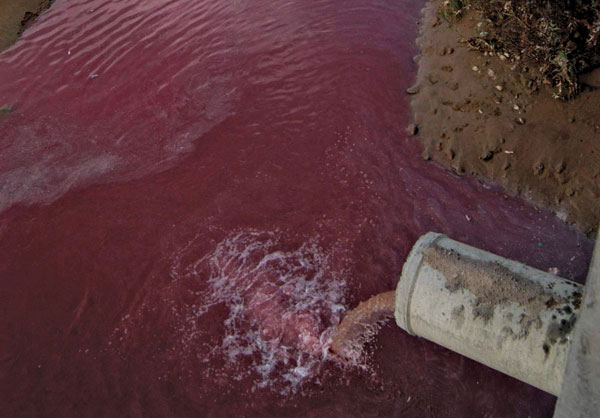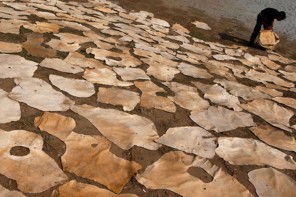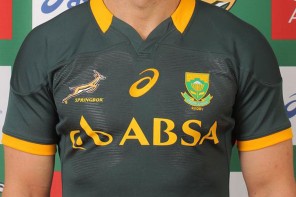Most of us know that the fashion industry isn’t the most sustainable industry in the market. The fast cycles (promoted by disposable clothing that needs to be replaced each season), coupled with harsh labour practices, cross-country transport and the chemicals used during the production processes, make it everything but green. While a lot of attention gets placed on labour practices and production processes, how often do we take a look at the fashion industry’s effect on water supplies?
According to China Daily, a report produced by Beijing-based environmental organisation EnviroFriends, the textile industry produced 2.5-billion metric tons of sewage in 2010, making the sector the third-biggest water polluter among 39 industries.
Two-thirds of China’s cities lacks an adequate water supply, one-fifth of cities have urban water sources that fail to meet hygiene standards and 300-million rural residents have no access to safe sources of drinking water. To put this into perspective – there are more people living in China than in the United States and Canada combined that could be drinking and using water that doesn’t meet the basic safety standards.
Inefficient water usage
Garment production requires large volumes of water – everything from washing, bleaching and dying requires water. There are also a number of different chemicals used throughout the process, including strong chemicals such as chlorine, formaldehyde and heavy metals like mercury and lead, which are harmful to the environment as well as humans.
The Ministry of Environmental Protection also reports that China uses as much as three times the global average of clean water to produce the same amount of fabric due to a lack of advanced technologies. The report notes that in Guangzhou, the textile industry discharges a whopping 127.4 metric tons of sewage for each 10,000 (USD$1,600) of output.
Li Li, the founder of EnviroFriends, says it’s hard for ordinary consumers to know which brands are behind the pollution. The report released the names of 46 Chinese and international clothing brands that violate China’s environmental laws (the brands included Levi Strauss, Guess, Zara and Polo Ralph Lauren, among others). It may sound easy to prosecute and fine these companies, but as Refinery29.com reports, China is currently so industry-friendly that “fines for abuse often cost manufacturers less than the costs of creating more responsible production methods”.
Elawspotlight.com reports that even though The People’s Republic of China Water Pollution Control Act has been in effect since June 1, 2008, local governments aren’t taking it seriously. The act includes protections such as setting national and state discharge standards, implementing emissions permit system, and establishing water quality monitoring and a lot of hope was put on this new law. “However, none of these rules have been implemented effectively, because no local government is willing to take it seriously enough regardless of GDP decrease. Therefore, as long as GDP is still valued as the country’s number one target, pollution can’t be eliminated,” says Elawspotlight.com.
Everyone’s fashion, everyone’s problem
Statistics from the China Textile Industry Association showed that the country processed 41.3 million metric tons of fibres in 2010 – which is approximately 52% of the global total. On top of this, the total export volume of clothing was worth USD$212-billion, which is 34% of the global total.
Some companies, however, are starting to take action. In December last year, Christie’s held its annual Green Auction: Bid to Save the Earth, which raised close to USD$5-million over the past two years, with a focus on the world’s water. Four organisations that are benefitting from the event include Conservation International, Oceana, the Central Park Conservancy and the Natural Resources Defence Council.
One of the auction’s slots, “Clean by Design,” supports the NRDC’s work and drew attention to the rampant water pollution in China. “You know the colour that’s going to be in fashion next season by the colour of the rivers in China,” said NRDC President Frances Beinecke.
The event also emphasised how the fashion industry is increasingly rallying together to clean up its act. “This is something that we have to do together,” said Vogue editor Anna Wintour at a video shown at the event.
What can you do?
A huge part of sustainable fashion is about reducing your demand and consumption. When consumers start to buy more garments made within sustainable, well-regulated guidelines, there’s less of a demand for the fast-fashion that gets produced by underage workers, in unsafe environments and that contribute to the pollution of the water.











